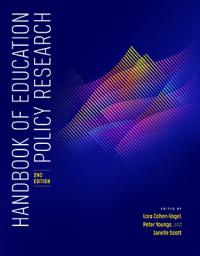Hispanic-Serving Institutions and Education Policy and Politics
AERA members: Please enter your coupon code in the shopping cart coupon discount field.
Hispanic-Serving Institutions and Education Policy and Politics
Gina Ann Garcia
Andréa Rodriguez
Jessie Hernández-Reyes
Kayla C. Elliot
Jacquelyn R. Jones
Nadrea R. Njoku
Click here to view and purchase Handbook of Education Policy Research, 2nd Edition
Title information
Hispanic-serving institutions (HSIs) are defined in Title V of the Higher Education Act as institutions with an undergraduate student enrollment that is at least 25% Hispanic/Latine/x. The policy, however, does not ensure an automatic funding stream to eligible institutions. Instead, federal agencies provide competitive funding opportunities for HSIs that typically fall under Title III and Title V. Although funding earmarked for HSIs has grown exponentially, the number of HSIs competing for funds has increased dramatically, creating funding inequities and making it difficult for HSIs to enact servingness in practice. HSIs are tasked with providing access to higher education and serving historically minoritized students, yet the funding disparities make it difficult to address the historical debt that the United States owes to these students. HSIs have the potential to play an important role in the U.S. system of higher education, but they have not fully actualized this opportunity. In this chapter the authors discuss the history and evolution of HSIs as a political construct born out of federal policy and describe the concept of “servingness.” They also describe pertinent macrolevel policies (federal and state) and policy intermediaries that both help and hinder eligible HSIs from enacting servingness.
Keywords: Hispanic-serving institutions; servingness; Higher Education Act; Hispanic/Latino education

